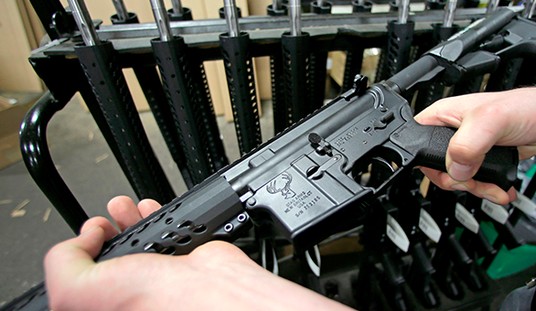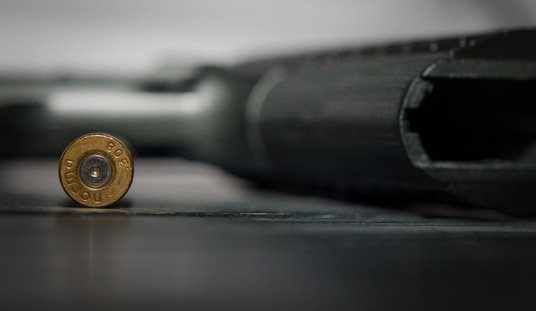AP Photo/David Zalubowski
Mass shootings are part of the American consciousness. They’re horrific, and they’re something we’re all struggling to make sense of. It’s a catalyst, not just for people to embrace gun control, but also for people to embrace gun ownership and concealed carry. It’s done a number on the gun rights debate, that’s for sure.
But much of what surrounds mass shootings also has something to do with media coverage of those mass shootings [emphasis mine]:
As the first anniversary of the Columbine High School shooting approached, a group of students, teachers, and parents addressed reporters at a forum organized by the local school district. Sue Petrone, who lost her 15-year-old son, Danny Rohrbough, in the suburban-Colorado massacre that took the lives of 12 students and a teacher on April 20, 1999, appealed to journalists to focus on the victims and to be sensitive to the wishes and needs of the survivors.
“[I] respectfully request that the media not broadcast any footage from April 20,” Petrone said. “That would be footage showing students running from the school, students on stretchers, and murdered students.” Finally, Petrone and the others asked that the killers’ names be omitted from anniversary coverage.
The requests were, to some extent, honored. Nearly a year into reporting on what the journalist Dave Cullen has described as the first televised school shooting, and hoping to repair a relationship damaged by factual errors and accusations of sensationalism, broadcast networks decided to pool their anniversary coverage. Reporters agreed to stay away from Columbine on April 20 and instead attended a pre-anniversary tour of the school and an invitation-only meeting with victims’ families. But some news editors and executives were willing to bend only so much. “I feel for the parents who don’t want those images shown on television,” a producer with ABC’s Good Morning America said in the 2003 documentary Covering Columbine, “but I think it will be impossible to do that, for any television outlet to tell what happened without showing what happened.”
A CNN vice president told the filmmakers, “As far as using the names of the people who committed the crime, to me, I understand why that bothers the folks who lost children there, but that just is not something I could go along with.”
Now, I’m not saying I wouldn’t have made the same call at the time. It was a difficult time, and while there had been mass shootings before, those were before 24-hour news. No one knew where things would lead.
Yet 20 years later, we do. We know that some are glorifying Columbine and considering ways to join the ranks of those two murderers.
Responsibly covering such events isn’t just about honoring victims, survivors and their families on the anniversaries of these atrocities. It’s about not glorifying the killers and making them household names, even if for just a short time.
There’s more, though. From the same article (emphasis mine):
Missing from much of this coverage, some journalists and media critics argue, is an emphasis on solutions journalism, and in particular substantive examinations into how mass shootings can be prevented. Last November, after a gunman killed 12 people and injured 18 more at a bar in Thousand Oaks, California, Lois Beckett, a reporter who covers gun violence for The Guardian,tweeted: “In the face of an increasing number of mass shootings, media outlets give intense coverage to the terror and the trauma of these events, but almost no coverage of solutions, including solutions ordinary people can use.” In another tweet, Beckett wrote, “I am sick of media outlets making a case for hopelessness and stalemate after the latest mass shooting. There are ways to prevent some of these shootings. But people don’t know about them because WE DON’T COVER THEM.”
An example of what Beckett was advocating for could be found following a January 2018 school shooting in Benton, Kentucky, in which the 15-year-old shooter reportedly used a handgun taken from his parents’ bedroom closet. The day after the shooting, the Ohio Valley ReSource, a journalism cooperative that covers Ohio, Kentucky, and West Virginia, published a story on child-access prevention laws, which hold gun owners liable should children access their firearms. The ReSource reported that the laws work in states that have them, and in some cases have reduced accidental gun deaths among children by as much as half. Kentucky, the ReSource noted, is not one of those states. Last August, The Washington Post followed up with an investigation into the enforcement of these laws.
The problem, however, is that when solutions are discussed in the media, it’s invariably one-sided. It’s all about adding new gun laws, such as the example cited above. Any suggestion of solutions outside of that is conspicuously absent.
That’s because “solutions journalism” is activist journalism with a prettier name.
We on this side of the debate are more than willing to talk solutions. We’re also convinced that our gun rights are sacred and infringing on them isn’t the right move. We think we can find options that don’t punish law-abiding citizens for the actions of others. While those advocating for gun control claim they’re doing no such thing, those claims fall on deaf ears, especially since that’s almost all we hear about from so-called “solutions journalism.”
Hardening schools is something we should all be able to agree on. Even if someone doesn’t think it’s enough, can’t we agree that making it harder for killers to access students is a good thing?
That’s not what the media are about, though.
Instead, they want to either lionize killers or demonize innocent, law-abiding gun owners for not rolling over at their activist demands. Is it any wonder that nothing gets accomplished?








Join the conversation as a VIP Member